#Tel Erani
Text

5500-Year-Old City Gate Unearthed in Israel
The Israel Antiquities Authority announced on Tuesday that archaeologists have discovered the earliest known ancient gate in the land of Israel, at Tel Erani, near Kiryat Gat Industrial Zone.
The Tel ‘Erani was fortified in the Early Bronze I period, more than 5,000 years ago, and was one of the major economic and commercial centers of this period in the southern Levant.
The ancient city of Tel Erani is one of the first examples of urbanization in Israel and the gate’s discovery indicates that urbanization in the region occurred centuries earlier than believed.
Previously, experts had believed that urbanization in this area had started around 5,200 years ago, which was the age of the oldest known gate in Israel. Until the current discovery, the oldest gate to a fortified city was in Tel Arad, near Beersheba. But the dating of the Tel Erani gate pushes the evidence of the start of urbanization back by a number of centuries, to around 5,500 years ago.
Prior to laying a water pipe, the Israel Antiquities Authority conducted an excavation funded by Mekorot, Israel’s national water company, over the last month. During this excavation, a gate and part of an ancient city’s fortification system dating to the Early Bronze IB, approximately 3,300 years ago, were discovered. These structures reflect the beginning of urbanization in the Land of Israel and the Southern Levant.
The Tel Erani gate, which was preserved at a height of 1.5 m, is comprised of a passageway built of large stones that leads into the ancient city. Two towers made of large stones flank the gate, and between them there are rows of mudbricks. This gate is attached to the city walls that were uncovered in previous excavations.
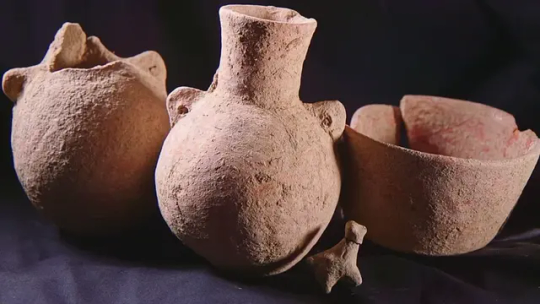
According to Emily Bischoff, Director of the excavation on behalf of the Israel Antiquities Authority: “This is the first time that such a large gate dating to the Early Bronze IB has been uncovered. To construct the gate and the fortification walls, stones had to be brought from a distance, mudbricks had to be manufactured and the fortification walls had to be constructed. This was not achieved by one or a few individuals. The fortification system is evidence of a social organization that represents the beginning of urbanization.”
“It is probable that all passers-by, traders or enemies, who wanted to enter the city had to pass through this impressive gate,” says Martin-David Pasternak, IAA researcher of this period. “The gate not only defended the settlement, but also conveyed the message that one was entering an important strong settlement that was well-organized politically, socially, and economically. This was the message to outsiders, possibly also to Egypt, where the process that would lead to the unification of the Lower and Upper Egypt under King Narmer was already beginning.”
Pasternak adds that, “At the end of the Early Bronze Age, the Egyptians themselves arrived here and settled the tell, and they reused the gate.”

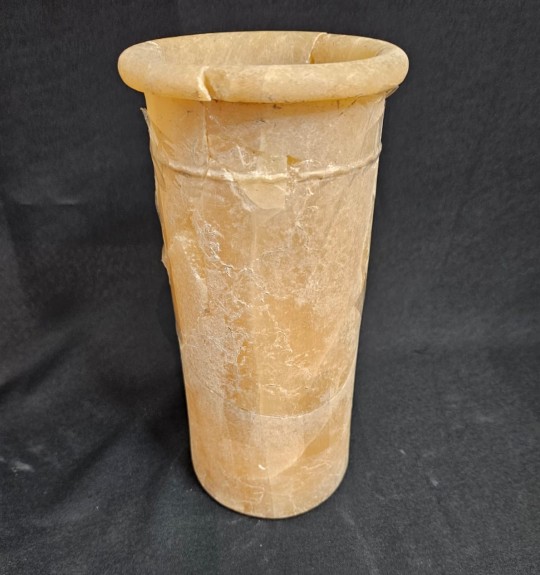
According to Dr. Yitzhak Paz, IAA archaeologist specializing in the Early Bronze Age period, “Tell Erani, which is about 150 dunams in size, was an important early urban center in this area in the Early Bronze period. The tell site was part of a large and important settlement system in the southwestern area of the country in this period. Within this system, we can identify the first signs of the urbanization process, including settlement planning, social stratification, and public building. The newly uncovered gate is an important discovery that affects the dating of the beginning of the urbanization process in the country.”
The extensive excavations carried out by the Israel Antiquities Authority over recent years have led to dating the beginning of urbanization to the end of the fourth millennium BCE, but the excavations carried out at Tell Erani have now shown that this process began even earlier, in the last third of the fourth millennium BCE.
Archaeologists also found a number of interesting smaller discoveries, including a complete alabaster jar, a number of juglets, and red-colored bowls.
By oguz kayra.

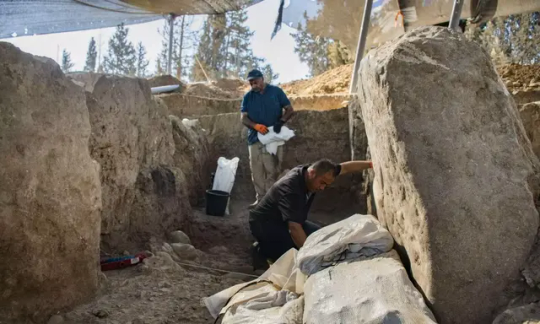
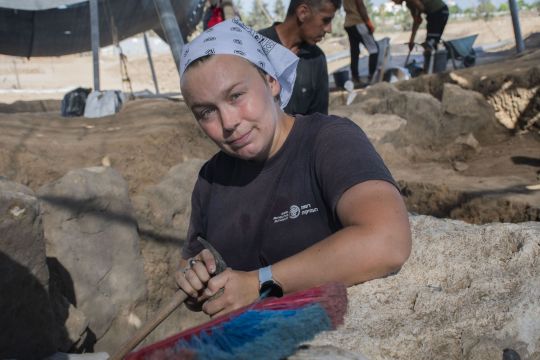

#5500-Year-Old City Gate Unearthed in Israel#earliest known ancient gate#Tel Erani#ancient artifacts#archeology#archeolgst#history#history news#ancient history#ancient culture#ancient civilizations#ancient israel#israeli history
112 notes
·
View notes
Text
A defensive city gate made with giant stone blocks has been unearthed in #Israel. Dating back 5,500 years, it is the country’s oldest.
20 notes
·
View notes
Text
by John Jeffay
Workers chanced upon the oldest city gate in Israel during excavations to lay a new water pipe.
The stone and mudbrick structure formed part of the fortifications around the ancient city of Tel Erani, in southern Israel, and is believed to be 5,500 years old.
Archeologists have spent many decades exploring the area, but the new discovery indicates the city dates back even earlier than originally thought.
Remains of the gate were found during test drillings to prepare for the laying of a new 11-kilometer water pipeline to the nearby city of Kiryat Gat.

Mekorot, the national water company, has diverted the pipeline as a result of the find, and has been funding a month-long excavation by the Israel Antiquities Authority (IAA).
Before the Tel Erani discovery, the oldest known gate in the country was at Tel Arad, near the southern city of Arad, and estimated to be 5,200 years old.
The Tel Erani gate, or passageway, was built into the city’s heavily fortified walls, which were up to eight meters thick.
12 notes
·
View notes
Text
Izrael földjének eddigi legrégebbi városkapuját fedezték fel
Izrael földjének eddigi legrégebbi, mintegy 5300 éves városkapuját fedezték fel a régészek Kirjat Gat város iparnegyedénél – jelentette az Izraeli Régészeti Hatóság (IAA) kedden.
Új vízvezetékek lefektetése előtt végeztek júliusban feltárást a Tel Erani nevű ásatási dombon a régészek, amikor rábukkantak a korai bronzkorban, i. e. 3300 körül épített ókori város kapujára és erődrendszerének egy…
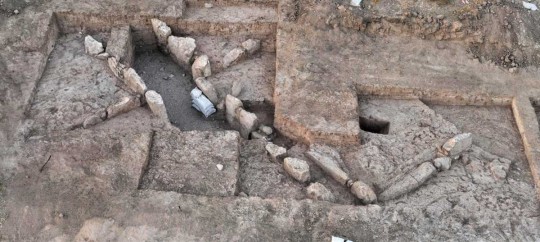
View On WordPress
0 notes
Text
In Ausgrabungsstätte Tel Erani: Ältestes Stadttor in Israel aufgestöbert
Weil neue Wasserleitungen verlegt werden sollen, schauen Archäologen und Archäologinnen in Tel Erani lieber nochmal genauer hin – und werden fündig. Sie legen ein Stadttor frei, das 5500 Jahre alt ist und damit die bisherigen Datierungen zur Urbanisierung in dem Gebiet hinfällig macht.
Weiterlesen…

View On WordPress
0 notes
Link
The Poles are doing some really interesting archaeology in prehistoric and Early Dynastic sites around the Middle East. They’re also at Tell el-Farkha in the northeastern Delta in Egypt. This work at Tel Erani is fascinating.
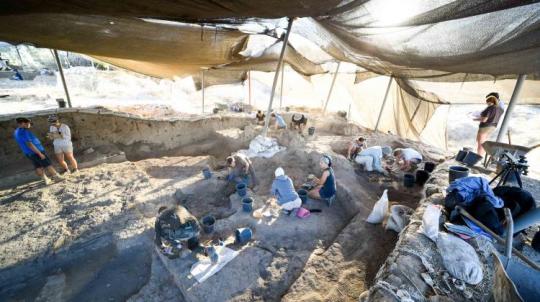
#archaeology#ancient Israel#Syro-Palestine#ancient Egypt#Naqada Period#Tel Erani#ancient interconnections#ancient trade#University of Auckland#Classics and Ancient History
9 notes
·
View notes
Text
What’s Stuck in Bronze Age Teeth?
An analysis of food residue on Bronze Age skeletons' teeth in northern Israel suggests that spices, fruits, and oils might have been imported from South and East Asia centuries earlier than had been previously thought. The study looked at proteins found in dental tartar the remains, excavated from two cities, dating to the 1000s BCE during the Bronze Age.
A resident of the Canaanite city of Megiddo had dental plaque that contained traces of turmeric and soy. And at Tel Erani, a Nagada Egyptian trading post, traces of banana were found on the teeth of another Bronze Age person. While it is possible that these two individuals previously lived in Southeast or Southern Asia and immigrated to northern Israel, it is also possible the foods were traded to the area.
Spices, foods, and luxury goods from Southern Asia were known to have reached the Mediterranean by the Roman era. But this study would move back the date of such long-distance trading by thousands of years.
329 notes
·
View notes
Text
Ancient Mediterranean People Ate Bananas and Turmeric From Asia 3,700 Years Ago
https://sciencespies.com/history/ancient-mediterranean-people-ate-bananas-and-turmeric-from-asia-3700-years-ago/
Ancient Mediterranean People Ate Bananas and Turmeric From Asia 3,700 Years Ago
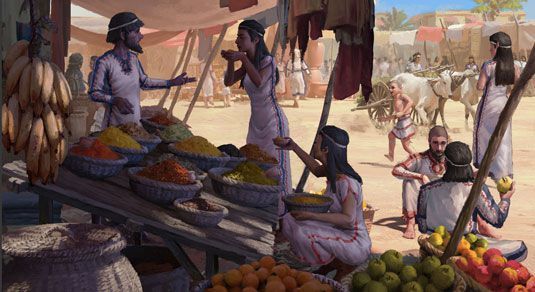
The story of the trade route from Asia to the Mediterranean world is commonly thought to begin in the first century A.D. Now, research reveals that people in the Mediterranean ate foods that grew in South Asia—like sesame, soybean, turmeric and banana—at least 3,700 years ago.
New analysis of fossilized tooth plaque from 16 ancient Mediterranean people reveals that their diet was more diverse than researchers previously thought. In a study published Monday in the journal Proceedings of the National Academy of Sciences, researchers reconstruct the eating habits of people living in the Bronze and Early Iron Age across the Southern Levant.
“We need to get rid of the assumption that people in the past only ate what grew in their immediate surroundings,” Philipp Stockhammer, a professor at the Max Planck Institute for the Science of Human History in Germany, tells Claire Cameron for Inverse. “From early on, humans were interested in different tastes, exotic food, and elaborate cuisine, and took a lot of effort to get access to a variety of food.”
The research adds to archaeological and textual evidence that food was an important part of the globalized import system for the people of Southern Mediterranean, reports Andrew Curry for National Geographic.
“Our findings indicate that the ancient societies of the Eastern Mediterranean and South Asia were engaging in trade and communication during the 2nd millennium B.C.E.,” Christina Warriner, assistant professor of Anthropology and study co-author, tells Inverse. “Today, it is hard to imagine Levantine cuisine without sesame-based foods like tahini, but sesame was originally an import.”
Turmeric, bananas and soybeans were staple foods in South Asia at the time. Today, Levantine cuisine centers the flavors of ras el hanout, a spice blend with turmeric, and the sesame-based halva or tahini, Inverse reports.
The research included the remains 16 people who lived in the region between 1688 B.C.E. and 1000 B.C.E. Some were found buried in Megiddo, a town in present-day Israel, sometimes better known by its Biblical name, Armageddon. Based on the objects they were buried with, these people appeared to be wealthy. Others, like those found in Tel Erani, also now Israel, were not so wealthy, National Geographic reports.
Researchers studied the teeth of 14 skulls that were well preserved. Dental calculus, also known as tooth tartar, is a form of calcified dental plaque. It was once thought to be junk that was discarded in archaeological digs, according to National Geographic. But the dental calculus contains traces of animal DNA and microfossils that researchers can match with certain edible plants.
“If you would stop brushing your teeth, in 2,000 years I could tell what you were eating,” Stockhammer tells National Geographic.
They found traces of locally grown foods and known staple crops like dates and wheat. But they also discovered proteins found in wheat, sesame, turmeric, soybean and banana—clues that indicate a much more diverse food culture than previously thought.
“We show that protein analysis can be used to detect processed and prepared foods, like oils and spices, that otherwise leave very few diagnostic traces behind,” Warriner tells Inverse. “This is exciting because oils and spices were likely among the earliest goods traded over long-distances, but they are among the most difficult foods to identify archaeologically.”
Foods that were consumed by the wealthier classes—like those buried in Megiddo—seemed to become available to more common people over time. The high-status individual in Megiddo seems to have eaten exotic foods in the early second millennium. The teeth of the Tel Erani man, on the other hand, show traces of banana microfossils from the late second millennium, Inverse reports.
Andrew Clarke at the University of Nottingham tells New Scientist that the dental analysis technique provides new opportunities to understand the food histories of people around the world.
#History
0 notes
Link
The human mouth is full of bacteria, which continually petrify and form calculus. Tiny food particles become entrapped and preserved in the growing calculus, and it is these minute remnants that can now be accessed for scientific research thanks to cutting-edge methods. For the purposes of their analysis, the researchers took samples from a variety of individuals at the Bronze Age site of Megiddo and the Early Iron Age site of Tel Erani. They analyzed which food proteins and plant residues were preserved in the calculus on their teeth.
0 notes